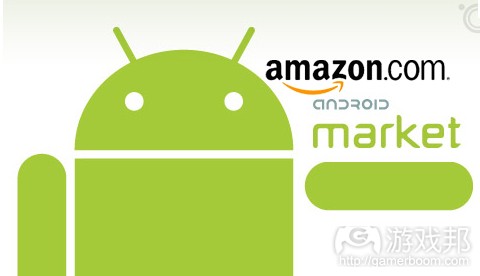比较Android Market和亚马逊Appstore优缺点
作者:mominis
Android应用推广市场如今日益分散和凌乱。从终端用户角度看,出现新应用商店并不算坏事。不喜欢某商店的内容或定价?那就转移到别的商店,看看它们提供的内容。而开发商则很难把握既有应用商店的指导方针,定价和推广,他们将因亚马逊之类新商店的涌现而面临更大挑战。
Android商店遍地开花
Android商店遍地开花(游戏邦注:例如,AppBrain、MobiHand、SlideMe、GetJar、AndSpot以及Opera最近推出的应用商店),手机内容分销商和设备制造商也开始纷纷参与其中,例如摩托罗拉之前宣布发行自己的“Android Market”。Android推广市场的分裂性问题丝毫不见起色。
Android Market Vs. 亚马逊商店
用户将如何看待日益涌现的android应用商店,尚待分晓。但用户体验(如内容浏览)、推荐、曝光和定价无疑将直接决定商店是否会受到欢迎。
从开发商角度看,易用性、智能API、付款渠道和用户服务将成为影响用户选择的决定性因素。这反过来也会影响个别商店的应用目录。
下面来看看这两家主流Android应用商店的对比情况。
Android Market的优点
1. 推广
* 准入门槛低——开发商只需支付25美元注册费便能在该商店发行应用。
* 上市时间短——应用5分钟内就能上线。
*强大的 预安装市场——Android Market几乎植入所有Android手机(游戏邦注:少数运营商除外)。
2. 定价
收入分成——Android Market市场目前主要遵循标准三七分成比例,这个模式显然非常有效。
Android Market的弊端
1. 定价
* 注意:据悉,谷歌的主要目标并非出售更多应用,而是扩张其广告网络,囊括尽可能多的移动设备。
2. 指导方针
* 缺乏质量管理——开发商会提交存在缺陷,或者甚至是破坏Android Market TOS(测试操作系统)的应用。此外,开发商还可通过给予同款应用的20种版本不同名称/色彩方案/皮肤,成功上传内容,躲过Android Market TOS的“法眼”。因此,这将形成极其糟糕的用户体验。
3. 营销和推广
* 缺乏信息——该应用商店依然缺乏追踪和分析工具,致使开发商无法有效推广产品。
亚马逊应用商店的优点
亚马逊商店是个颇有保障的选择,开发商能够自由发行巨作(游戏邦注:例如Rio的《愤怒的小鸟》)。
1. 定价
* 多种付费方式:开发商可以选择采用亚马逊的一键式付费系统,亦可在应用中植入PayPal等其他付费渠道。此外,商店支持信用卡、礼物卡,甚至是帐户支付渠道。亚马逊还接受尚未享有谷歌Checkout服务国家的付费系统。
2. 推广
* 更广阔的终端用户覆盖范围——亚马逊已握有全球最大的用户基础,供开发商深入挖掘。
* 丰富电子商务专业知识——亚马逊在了解用户,关注用户行为和喜好方面经验丰富。所有这些专业知识都可转移到应用商店领域,这将带来更优质的终端用户体验和更广阔的开发商利润空间。
亚马逊应用商店的弊端
1. 定价
* 长期以来的高额注册费——开发商要入驻亚马逊App Store需支付99美元年费(虽然开发商目前享有头年免费福利)。
* 利润分成——按照亚马逊使用条款,开发商能够分成亚马逊选定价格的70%利润,或20%的开发商“建议零售价”,这取决于哪个模式带来的利润更丰厚。即便亚马逊决定免费“出售”应用,开发商依然能够获得某些收入。从根本来看,此定价模式令亚马逊掌握了定价主动权。
2. 指导方针
* 存有缺陷的TOS——亚马逊TOS存在问题,他们保留修改代码的权利/添加自己的DRM(数字版权管理)保护,这意味着他们只瞄准自己认可的设备。
* 亚马逊还规定应用的“原始可用日期”需同开发商在应用中添加“类似服务”的日期保持一致。
游戏邦注:原文发布于2011年3月17日,文章叙述以当时为背景。(本文为游戏邦/gamerboom.com编译,如需转载请联系:游戏邦)
Android Market and Amazon Compared
By mominis
Android app distribution is becoming an increasingly fragmented and messy environment. From an end user’s perspective, new app stores aren’t necessarily a bad thing. Don’t like the selection or pricing in one store? Head over to the next one and see what they have to offer. Developers, on the other hand, are having a hard time making sense of the existing app store’s guidelines, pricing and distribution and could be facing more challenges with new stores like Amazon’s upcoming app store.
Android Stores Aplenty!
There are already plenty of alternative Android markets such as AppBrain, MobiHand, SlideMe, GetJar, AndSpot, Opera’s recently launched mobile market, with mobile carriers and device manufacturers such as Motorola announcing their own “Android Market”. The end of Android distribution fragmentation is nowhere in sight.
Android Market and Amazon Compared
It remains to be seen how customers will react to the growing number of android app stores. Nonetheless, user experience such as content navigation, recommendations, discovery and of course pricing will play a significant role in determining if other app stores will prevail.
From a developer standpoint, issues such as ease of use, smarter API’s, payouts and customer service will inevitably be the deciding factors of where they choose to upload their apps. This in turn will affect the individual app store’s catalog of apps.
Let’s look at how the leading Android app stores stack up.
Android Market Benefits
1. Distribution
* Low barrier of entry – Developers can publish apps to the market after paying a $25 registration fee.
* Short time to market – Apps go live within about 5 minutes.
* Pre-Installation – The Android Market is already installed in most Android supported phones (with the exception of a few operators).
2. Pricing
Revenue Share – The Android Market currently works on the standard 70/30 revenue share model which has clearly proven itself effective.
Android Market Drawbacks
1. Pricing
* Lack of different pricing models – Subscription based monetization and in-app purchasing aren’t currently available, although as of recent news, this is supposedly rolling out in May.
* Note: It has been suggested that Google’s primary goal has never been to sell more apps, but rather to expand their advertising network to include as many mobile devices as possible.
2. Guidelines
* Lack of quality control – Developers can submit flawed apps or even apps that violate the Android Market’s TOS. In addition, developers can fly under the Android Market’s TOS by uploading 20 different versions of one single app and justify the upload by giving each app a different name/color scheme/skin. Consequently, this may contribute to an all around bad user experience.
3. Marketing and Distribution
* Lack of information – Tracking and analytical tools are still missing from the app landscape in general, limiting developer’s ability to market their product well.
Amazon App Store Benefits
Amazon brings a credible alternative app market, leaving them free to solidify big deals such as the upcoming Angry Birds, Rio launch.
1. Pricing
* Alternative billing methods: Payments will be made through Amazon’s one-click payment system, although developers can integrate any other alternative systems like PayPal in their application. In addition, credit cards, gift cards, and even checking account payment options will be available. Amazon also accepts payments in countries where Google Checkout currently doesn’t.
2.Distribution
* Larger end-user reach – Amazon already holds one of the world’s largest user bases that developers can tap into.
* Expertise in e-commerce – Amazon has years of experience in understanding their customers and focusing on user behavior and user preferences. All their expertise will be utilized in their app store which should translate into a very promising end-user experience and developer profit margin.
Amazon App Store Drawbacks
1. Pricing
* Long-term high set up fees – Developers have to pay $99/year to host on Amazon’s App Store (though developers can currently benefit from the first year for free.)
* Revenue Share – As per Amazon’s terms of use, developers can earn 70% of whatever price Amazon chooses, or 20% of the developer’s “suggested retail price”, whichever is greater. Even if Amazon decides to “sell” the app for free, the developer will still get some revenue. This pricing model essentially puts Amazon in charge of what an app costs.
2. Guidelines
* Questionable TOS – Amazon TOS are questionable as they retain the rights to modify your code and/or add their own DRM protection, meaning they will only work on devices they approve.
* Amazon also requires that the app’s “Initial Availability Date” be identical to when a developer lists the application with a “similar service.”
In Conclusion
Amazon’s store is intended to go live in the near future and we’re intending to keep a close eye on how it will be accepted by the developer community and end users. Follow us over on Twitter @MoMinis and let us know your opinion about whether you’ve had a pleasant experience working Android Market or not and what you’d like to see change in the existing and upcoming stores.(Source:mominis)










































 闽公网安备35020302001549号
闽公网安备35020302001549号